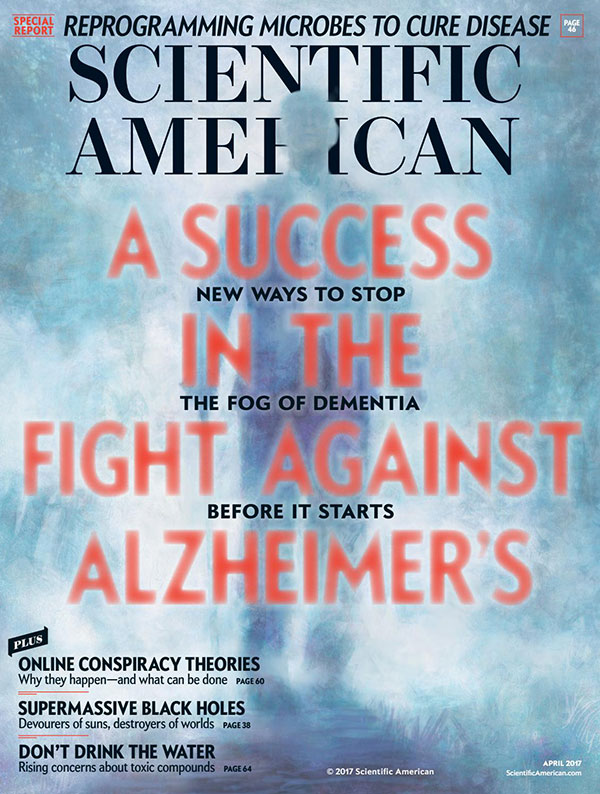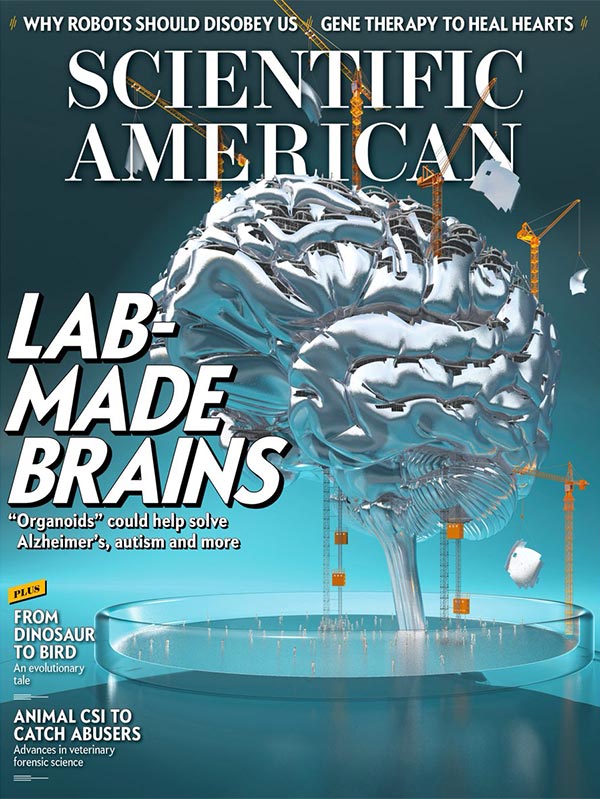IMAGE ABOVE: The Bruder Klaus Field Chapel, Mechernich, Germany (near Köln), built 2005–2007 following the plans of the Swiss architect Peter Zumthor. Photograph by Michael Shermer
For the world’s two billion Christians, Easter marks the resurrection of Jesus after his crucifixion death at the hands of the Romans. It is the resurrection that sets Christians apart from all other religions. In fact, as denoted in 1 Corinthians 15: 13–14: “But if there is no resurrection of the dead, then not even Christ has been raised. And if Christ has not been raised, then our preaching is in vain and your faith is in vain.”
Did Jesus die and come back to life? In the parlance of current events, is this a fake news story, an alternative fact invented by the followers of Jesus, or did it really happen?
As a scientist who was once a born-again evangelical Christian I have given this question much thought. Although I am no longer a religious believer, I think there is reasonable evidence that a man named Jesus probably did exist, and that there are good reasons to believe he was crucified by the Romans, which was a common tool of capital punishment at the time, employed against even common thieves, such as the two men crucified on either side of Jesus. Whether or not Jesus “died for our sins” is a pure theological dogma untestable by science, but the matter of his resurrection is open to scrutiny. There are reasons to doubt the claim.
First, Jews and Muslims, along with the world’s other four billion religious people, do not believe in the resurrection of Jesus. This is especially noteworthy in the other Abrahamic religions, given that Jews and Muslims worship the same God. And although the veracity of a truth claim is not determined by majority rule, if there were compelling evidence for this all-important event wouldn’t it at least convince some in a few other religions? That Jewish Rabbis and Muslim Clerics are so well educated and professionally trained in the art of evaluating arguments and evidence speaks volumes to their skepticism of the resurrection. (continue reading…)
read or write comments (15)
How to think about claims, even the Resurrection
According to the Oxford English Dictionary’ s first definition, a “skeptic” is “one who holds that there are no adequate grounds for certainty as to the truth of any proposition whatever.” This is too nihilistic. There are many propositions for which we have adequate grounds for certainty as to their truth:
There are 84 pages in this issue of Scientific American. True by observation.
Dinosaurs went extinct around 65 million years ago. True by verification and replication of radiometric dating techniques for volcanic eruptions above and below dinosaur fossils.
The universe began with a big bang. True by a convergence of evidence from a wide range of phenomena, such as the cosmic microwave background, the abundance of light elements (such as hydrogen and helium), the distribution of galaxies, the large-scale structure of the cosmos, the redshift of most galaxies and the expansion of space.
These propositions are “true” in the sense that the evidence is so substantial that it would be unreasonable to withhold one’s provisional assent. It is not impossible that the dinosaurs died a few thousand years ago (with the universe itself having been created 10,000 years ago), as Young Earth creationists believe, but it is so unlikely we need not waste our time considering it. (continue reading…)
read or write comments (27)
Why worldview threats undermine evidence
Have you ever noticed that when you present people with facts that are contrary to their deepest held beliefs they always change their minds? Me neither. In fact, people seem to double down on their beliefs in the teeth of overwhelming evidence against them. The reason is related to the worldview perceived to be under threat by the conflicting data.
Creationists, for example, dispute the evidence for evolution in fossils and DNA because they are concerned about secular forces encroaching on religious faith. Anti-vaxxers distrust big pharma and think that money corrupts medicine, which leads them to believe that vaccines cause autism despite the inconvenient truth that the one and only study claiming such a link was retracted and its lead author accused of fraud. The 9/11 truthers focus on minutiae like the melting point of steel in the World Trade Center buildings that caused their collapse because they think the government lies and conducts “false flag” operations to create a New World Order. Climate deniers study tree rings, ice cores and the PPM of greenhouse gases because they are passionate about freedom, especially that of markets and industries to operate unencumbered by restrictive government regulations. Obama birthers desperately dissected the president’s long-form birth certificate in search of fraud because they believe that the nation’s first African- American president is a socialist bent on destroying the country.
In these examples, proponents’ deepest held worldviews were perceived to be threatened by skeptics, making facts the enemy to be slayed. This power of belief over evidence is the result of two factors: cognitive dissonance and the backfire effect. In the classic 1956 book When Prophecy Fails, psychologist Leon Festinger and his co-authors described what happened to a UFO cult when the mother ship failed to arrive at the appointed time. Instead of admitting error, “members of the group sought frantically to convince the world of their beliefs,” and they made “a series of desperate attempts to erase their rankling dissonance by making prediction after prediction in the hope that one would come true.” Festinger called this cognitive dissonance, or the uncomfortable tension that comes from holding two conflicting thoughts simultaneously. Two social psychologists, Carol Tavris and Elliot Aronson (a former student of Festinger), in their 2007 book Mistakes Were Made (But Not by Me) document thousands of experiments demonstrating how people spin-doctor facts to fit preconceived beliefs to reduce dissonance. Their metaphor of the “pyramid of choice” places two individuals side by side at the apex of the pyramid and shows how quickly they diverge and end up at the bottom opposite corners of the base as they each stake out a position to defend. (continue reading…)
read or write comments (42)
This chapter contribution to Scientific American was originally published as “These Truths Are Not Self-Evident—but They’ve Been Firmly Established Over and Over by Scientific Research” (November, 2016). It was co-authored by Michael Shermer, Harriet Hall, Ray Pierrehumbert, Paul Offit, and Seth Shostak.
In a letter to his friend the botanist Joseph Hooker, dated January 14, 1844, Charles Darwin recalled from his voyage around the world in the HMS Beagle: “I was so struck with distribution of Galapagos organisms &c &c…that I determined to collect blindly every sort of fact which cd bear any way on what are species.” After five years at sea and nine years at home thinking about the origin of species Darwin concluded: “At last gleams of light have come, & I am almost convinced, (quite contrary to opinion I started with) that species are not (it is like confessing a murder) immutable.”
Like confessing a murder. Dramatic words. But it doesn’t take a rocket scientist—or an English naturalist—to understand why a theory on the origin of species by means of natural selection would be so controversial: if new species are created naturally—not supernaturally—what place, then, for God? No wonder Darwin waited 20 years before finally publishing his theory in 1859, and why more than a century and a half later people of some religious faiths still find the theory threatening. But that 150+ years have brought together so much evidence in support of the theory that it would be truly astonishing if it turned out not to be true—on par with doubting the Big Bang origin of the universe or the germ theory of disease. Why? Because of a convergence of evidence from many lines of inquiry.
Cosmologists, for example, reconstruct the history of the universe through a convergence of evidence from astronomy, astrophysics, planetary geology, and physics. Geologists reconstruct the history of the Earth through a convergence of evidence from geology, geophysics, and geochemistry. Archeologists piece together the history of civilization through a convergence of evidence from pollen grains, kitchen middens, potshards, tools, works of art, written sources, and other site-specific artifacts. As a historical science, evolution is confirmed by the fact that so many different lines of evidence converge to this single conclusion. Independent sets of data from geology, paleontology, botany, zoology, herpetology, entomology, biogeography, comparative anatomy and physiology, genetics and population genetics, and many other sciences each point to the conclusion that life evolved. (continue reading…)
Comments Off on Evolution is Still True



